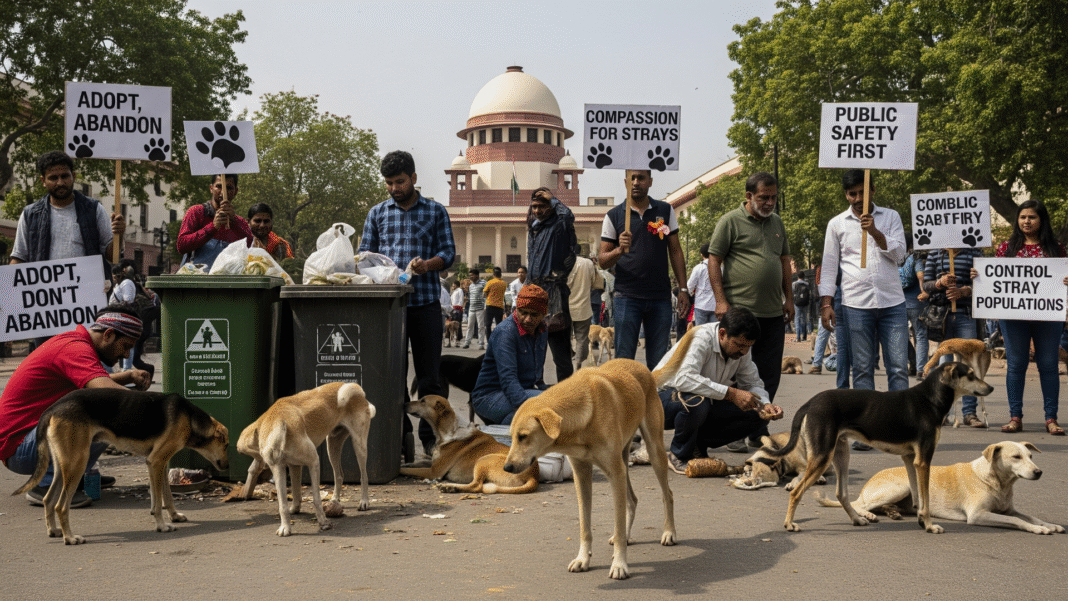The streets of Delhi are buzzing with more than just traffic this week. A groundbreaking Supreme Court ruling has ignited one of the most polarizing debates of 2025—what to do with India’s massive stray dog population. With over 10 lakh street dogs in Delhi alone and rising bite incidents claiming lives, the apex court’s eight-week ultimatum has divided animal lovers, public safety advocates, and policymakers nationwide.
Introduction
On August 11, 2025, India’s Supreme Court made headlines by ordering the complete removal of all stray dogs from Delhi-NCR streets within eight weeks. This suo moto decision, triggered by the tragic death of a six-year-old girl from rabies, has sparked passionate debates about public safety versus animal welfare—a conversation that’s dominating social media, news channels, and dinner table discussions across India.
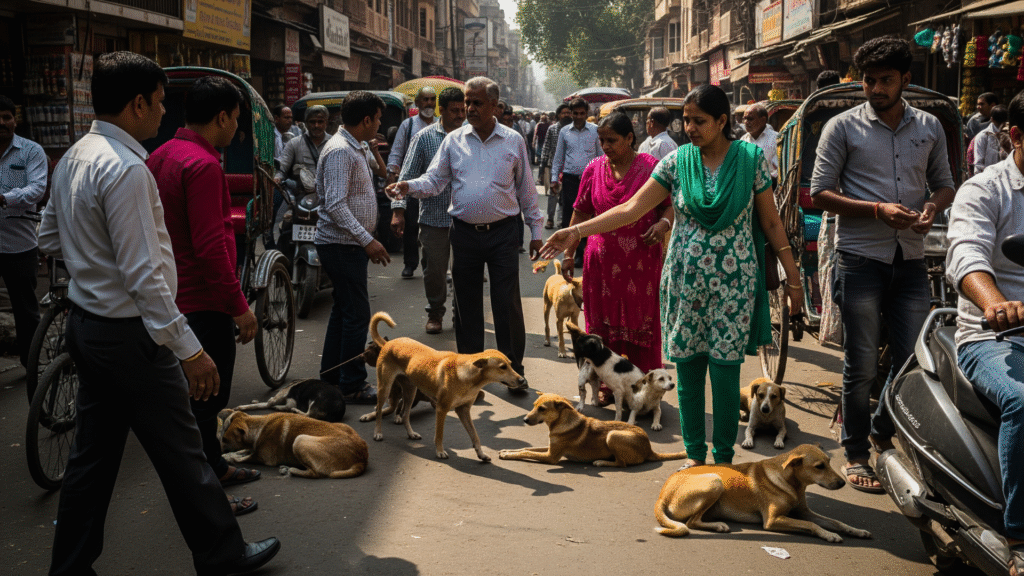
The Numbers That Shocked the Court
- Alarming Statistics: Delhi reported 26,000 dog bite cases in 2025 so far, with 49 confirmed rabies cases by July 31. Nationwide, over 37 lakh dog bite incidents were recorded in 2024.
- Massive Population: Delhi alone houses an estimated 10 lakh stray dogs, while India has 1.5 crore strays according to the 2019 livestock census.
- Daily Reality: Delhi hospitals handle nearly 2,000 dog bite cases every day, making it a public health emergency.
- Global Context: India accounts for 36% of all rabies deaths worldwide, with over 4,000 dog bite fatalities recorded in 2019.

What the Supreme Court Ordered
The bench of Justices J.B. Pardiwala and R. Mahadevan didn’t mince words. “Infants and young children should not at any cost fall prey to stray dog bites leading to rabies,” they declared. Their comprehensive directive includes:
- Immediate Removal: All stray dogs in Delhi-NCR must be captured and permanently housed in shelters within eight weeks
- No Return Policy: Unlike current ABC (Animal Birth Control) rules that require sterilized dogs to be released back to their original locations, no captured dog can return to the streets
- Shelter Infrastructure: Civic bodies must build capacity for at least 5,000 dogs immediately, with CCTV monitoring and 24/7
- Zero Tolerance: Anyone obstructing the dog-catching process risks contempt of court charges
The Great Divide: Why This Order is Controversial
Animal Rights Groups Call it “Cruel and Illegal”
Organizations like PETA India have slammed the ruling as “impractical” and “illogical”. They argue:
- Mass sheltering of 10 lakh dogs is “simply impossible”
- The order violates Animal Birth Control Rules, 2023, which require sterilized dogs to be returned to their territories
- Displacement causes territorial fights, starvation, and ultimately doesn’t solve the root problem
- Previous scientific studies show that removal and sheltering has never worked long-term
Public Safety Advocates Welcome the Move
Residents’ welfare associations, parents, and dog bite victims’ families have praised the decision:
- Dog bite cases in Delhi alone rose from 6,691 in 2022 to over 25,000 in 2024
- Tragic incidents of children being killed or severely injured have traumatized communities
- Current sterilization programs have been ineffective despite decades of implementation
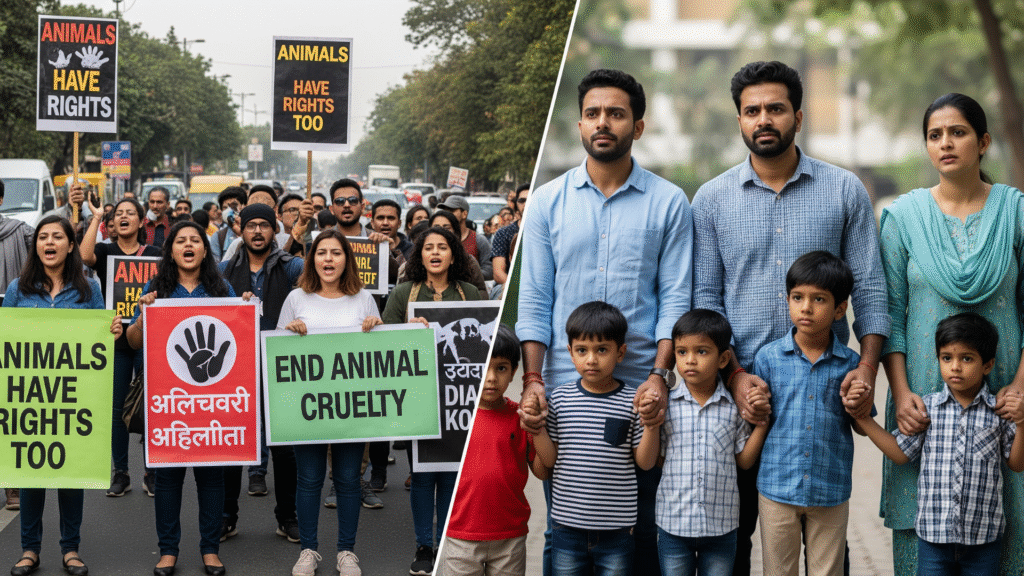
Celebrity and Political Reactions
The order has drawn responses from unexpected quarters:
- Congress leaders Rahul Gandhi and Priyanka Gandhi Vadra criticized it as “inhumane” and a “step back from science-backed policy”
- Delhi Development Minister assured “time-bound implementation” of the court’s directive
- Trinamool MP Saket Gokhale wrote to the Chief Justice requesting a stay on the order
- Animal activists are using social media campaigns with hashtags like #CommunityAnimals and #AnimalRights to build opposition
The Implementation Challenge
Even supporters acknowledge the massive logistical challenges:
- Shelter Shortage: Delhi currently has only 20 animal control centers housing less than 5,000 dogs—barely 0.5% of the required capacity
- Financial Burden: Housing and caring for 10 lakh dogs would require unprecedented funding and infrastructure
- Manpower Crisis: Civic bodies already struggle with basic services; managing such a massive operation seems daunting
- Dogs’ Territorial Nature: Capturing and relocating territorial animals creates its own set of behavioral and practical problems
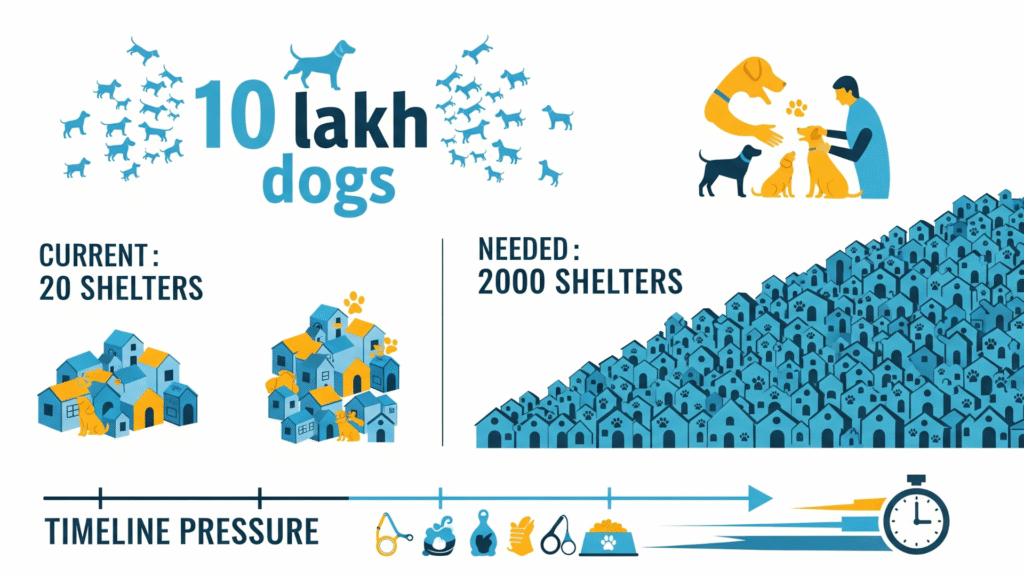
How Other Cities Handle the Crisis
While Delhi grapples with this new directive, other Indian cities offer different models:
- Mumbai: Manages 90,700 stray dogs through NGO partnerships for sterilization and vaccination without relocation
- Kolkata: Designates specific feeding zones with time restrictions (before 9am and after 9pm)
- Chandigarh: Offers ₹10,000 compensation for bite treatment and ₹20,000 for flesh loss
- Netherlands Success Story: Completely eliminated strays through comprehensive sterilization, strict breeding laws, and responsible ownership
What Young Indians Can Do
This crisis offers opportunities for positive action:
- Stay Informed: Follow reliable news sources and avoid sharing unverified social media content
- Community Solutions: Join or support local animal welfare groups working on sterilization programs
- Career Opportunities: Consider veterinary science, animal behavior, or public health careers addressing this challenge
- Digital Activism: Use AI tools and social media responsibly to promote balanced dialogue between animal welfare and public safety
The Bigger Picture
This controversy reflects deeper questions about India’s rapid urbanization:
- How do we balance compassion with public safety?
- Can technology and AI help create better solutions for human-animal coexistence?
- What role should courts play when democratic processes fail to address public health crises?
- How can young Indians drive evidence-based policy rather than emotional reactions?
Conclusion
The Supreme Court’s stray dog order isn’t just about Delhi—it’s a wake-up call for all of India. Whether you support immediate removal or advocate for humane sterilization programs, one thing is clear: the status quo isn’t working. As we debate solutions, real children and dogs continue to suffer.
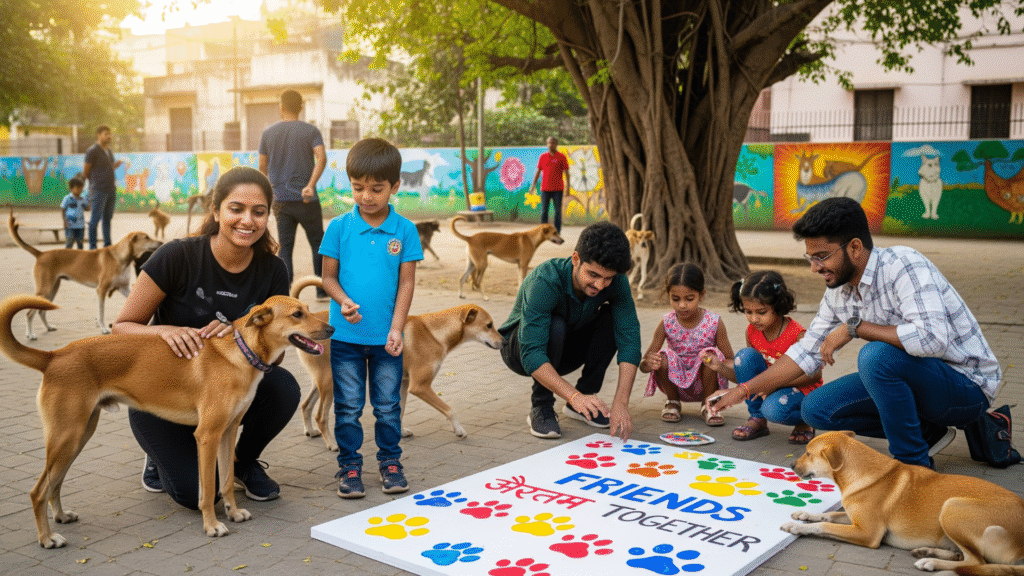
Where do you stand on this debate? Have you or your family experienced stray dog incidents? What solutions do you think could work better? Share your thoughts and experiences below—balanced dialogue is the first step toward finding real solutions!
“True compassion means finding solutions that protect both children’s safety and animal welfare—not choosing sides in unnecessary battles.”
– Samast India Editorial
